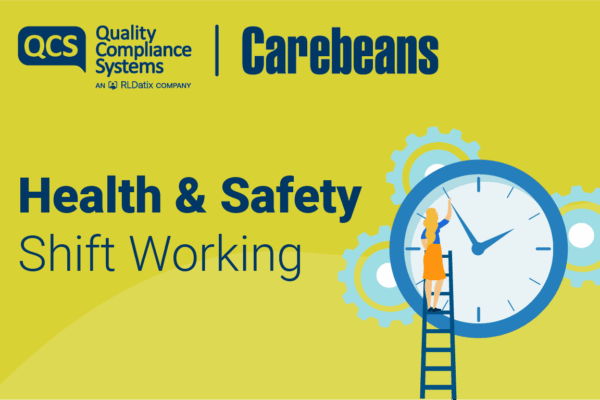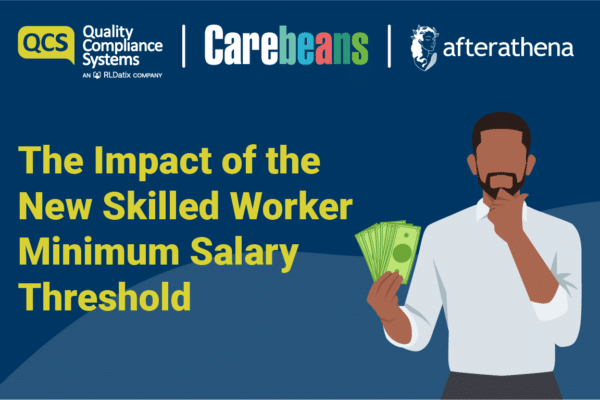One of the key points on the Brexit agenda was migration, and for the UK to have more control over its borders. Now that Brexit has finally happened, a new immigration system has been introduced.
Download our latest factsheet with our partner, Royds Withy King here, it outlines what has changed, what do they mean to the sector and cost implication.
Download Now
Alternatively, you can read the article here:
What has changed?
1. The end of free movement for EEA nationals
Free movement for EEA nationals ended on 31 December 2020. Any EEA nationals entering the UK from that date onwards will be treated in the same way as individuals from outside the EEA.
Any EEA nationals who were already in the UK before 31 December 2020 are eligible to stay in the UK indefinitely if they obtain settled status. They can apply online and must do so individually before the deadline of 30 June 2021. Early studies indicate that up to a third of EEA nationals that already reside in the UK do not know about the settlement scheme and up to half are not aware of the deadline of 30 June 2021. We would recommend that you publicise this information and encourage applicable staff to ensure that they have applied for settled status sooner rather than later.
2. New Skilled Worker route
The current sponsorship system for migrants from outside the EEA has been extended to apply to EEA nationals and their family members. This route is now called the Skilled Worker route.
Under the new system, the employer needs to obtain a sponsor licence and issue a certificate of sponsorship to the migrant. There is a minimum salary requirement £25,600 per annum, which can be reduced to an absolute minimum of £20,480 providing certain criteria are satisfied.
What does this mean for the sector?
Essentially this means that you will no longer have unfettered access to EEA workers, at a time when there are over 100,000 vacancies and significant staffing challenges created by COVID-19.
- Care assistants are not eligible for a visa as the role is not considered sufficiently skilled
- Senior care assistants and managers are currently eligible for a visa if they are paid a minimum salary of £25,600 or 80% of the market rate under the rules, whichever is higher. Although this is a lower salary threshold than the old system, it is still more than the market rate paid to senior care assistants. However, it has recently been announced that this role will be added to the Shortage Occupation List (“SOL”) from 6 April 2021, which reduces the salary requirement down to £20,480
- Nurses are eligible for a visa and are already on the SOL so they can gain entry with a salary lower than £25,600. You can recruit pre-registered Nurses (subject to certain requirements such as completing the OSCE and thus becoming registered within 8 months) or Nurses that are already registered with the NMC. The salary requirements are set in line with the NHS agenda for change (Band 3 for pre-registered, Band 5 for registered)
If you have a sponsor licence and have recruited in this way before then the system is similar, although it will now apply to EEA migrants as well as those outside the EEA.
8% of the care workforce is from the EEA. The impact of the new immigration restrictions may not be felt immediately as many will apply for settled status and will be able to stay. With high turnover rates in the sector, the lack of access to the EEA for care staff could create real difficulties for some providers and further shortages in the sector as a whole. It is certainly welcome news that additional care roles are now being added to the SOL, as this will give providers another way to recruit staff.
Cost
There are different costs for applying for a sponsor licence, depending on the type and size of organisation.
You’re usually a small sponsor if two of the following apply:
- Your annual turnover is £10.2 million or less
- Your total assets are worth £5.1 million or less; and
- You have 50 employees or fewer
- You’re a charitable sponsor if you’re either:
- A registered, excepted or exempt charity; or
- An ecclesiastical corporation established for charitable purposes
If none of the above apply you will be a medium or large sponsor.
If you are a small or charitable sponsor, applying for a licence costs £536 and for medium or large sponsors it costs £1,476. 80% of applications are dealt with in less than 8 weeks. The application process is quite complex, so we would recommend taking advice on this. Please do get in touch if it is something you are considering and we would be happy to help.






